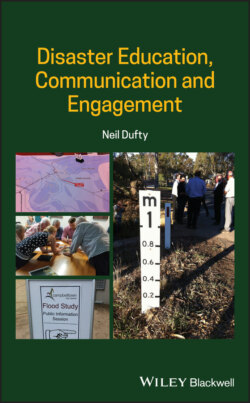Читать книгу Disaster Education, Communication and Engagement - Neil Dufty - Страница 5
Acknowledgements
ОглавлениеI would like to thank the staff at Molino Stewart Pty Ltd for the opportunity to research disaster education, communication, and engagement over the past 16 years. I would particularly like to thank Managing Director Steven Molino who has supported my research over the years and provided sage advice, especially in floodplain risk management and emergency management.
I would like to also like to thank three members of the New South Wales State Emergency Service for motivating me to write this book:
1 Phil Campbell, who 12 years ago described the state of research into disaster education as a ‘black hole’.
2 Steve Opper, who challenged me to find the evidence that disaster education actually works to change emergency preparedness and response behaviours.
3 David Webber, who has given me several funded opportunities to research innovations in disaster education and engagement. He has also been a great sounding board for translating this research into practice in the emergency services.
A primary source of research for this book was from Australia. In particular, I would like to note the robust disaster research of the Bushfire and Natural Hazards Cooperative Research Centre from which I have drawn many examples.
Also, I would like to acknowledge the learning from my network of disaster researchers and emergency managers from around the world. One of these international networks is The International Emergency Management Society (TIEMS) and another is the Centre for Water, Communities and Resilience at the University of the West of England (of which I am a member of the International Advisory Board). In Australia, I have learned much from involvement in Floodplain Management Australia (FMA), including from participating in its annual national conferences.
Finally, I would like to thank Sydney Trains for the environment to write this book to and from work.
